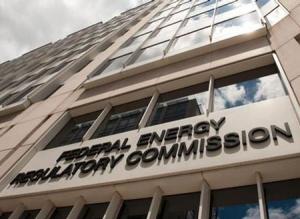Appellate Court Sustains FERC’s Approval of ISO-NE Tariffs

In a decision that turned on both procedural and substantive grounds, the U.S. Court of Appeals for the District of Columbia Circuit has affirmed two orders entered by the Federal Energy Regulatory Commission (FERC) with regard to socalled “scarcity pricing” for energy in the markets overseen by the Independent System Operator of New England (ISO-NE). The dispute before the court dates back to 2014, when FERC tasked ISO-NE with modifying certain components of its scarcity rates so as to encourage better performance. Scarcity rates are invoked when energy is not as plentiful in ISO-NE’s real-time market. The rates are designed to be higher so as to induce more generating production to meet real-time demand. However, an increase in scarcity rates can have a domino effect on the peak energy rate adjustment (PERA), which is another special pricing tool applicable in ISO-NE’s capacity markets.
The commission’s 2014 directive on scarcity pricing was protested by the New England Power Generators Association (NEPGA) as well as by some of the association’s individual members. However, they did not raise their objections in the same manner. Whereas the NEPGA sought clarification but stopped short of seeking rehearing, the individual members submitted formal motions for rehearing. But both pointed out that FERC had explicitly recognized in its order adopting ISO-NE’s proposed scarcity rates that the new rates could have an adverse impact on the PERA and exacerbate the “potential inefficiency” that already exists in connection with the PERA.
While the commission acknowledged the imperfections inherent in the nexus between scarcity rates and the PERA, FERC deemed the problem essentially moot, as it had already enacted changes to ISO-NE’s tariffs that would eliminate the PERA by June 1, 2019, with any changes needed prior to that date able to be addressed via separate stakeholder proceedings. As a result, FERC denied the petitions for clarification and rehearing.
Thereafter, both the association and its members appealed to the federal circuit court. As a threshold matter, however, the court said that it was unable to entertain the NEPGA’s petition because the association had failed to meet the prerequisites for appeal of FERC decisions as set forth in the Federal Power Act (FPA). That is, the court explained, the FPA specifically proscribes the court from accepting an appeal unless the petitioner had first requested rehearing before FERC.
Thus, because the association had pursued only a motion for clarification, as distinct from rehearing, the court held that it lacked jurisdiction to hear the NEPGA’s arguments. The court added that it did not matter that several NEPGA members had petitioned for rehearing, because the association’s court appeal was premised not on FERC’s rejection of its members’ requests for rehearing, but on the agency’s denial of the NEPGA’s petition for clarification.
The court hinted that the mandatory petition-for-rehearing standard may be a bit draconian, stating that it could not speculate on “precisely why Congress created this unusually demanding exhaustion scheme.” Nevertheless, the court said that it had no choice but to abide by the FPA as written and as long interpreted, such that the court is deprived of jurisdiction over claims brought by a party who fails to first seek rehearing before FERC, even if another related party had sought rehearing of the same matter.
Although finding that it could not rule on the merits of the association’s appeal, the court came to an opposite conclusion as to the appeal filed by the individual NEPGA members, since they had satisfied the FPA’s requirement that a request for rehearing be made before FERC prior to proceeding to the appellate court. Even so, however, the court found that they had not shown FERC’s order on scarcity pricing to be arbitrary or capricious.
The court remarked that the issue of scarcity pricing and its impact on the PERA was a quite complex and esoteric rate-making matter. Indeed, the court referred to the pricing scheme as requiring a highly “technical and policy-based determination” by FERC. Given the nature of the scarcity rates, the court ruled that absent clear and egregious errors on the part of the commission, its judgment was “entitled to judicial respect.” From the court’s perspective, both in its original decision on scarcity pricing and its subsequent orders denying rehearing and clarification, FERC had demonstrated a full grasp of the issues at hand and had provided a record that supported the reasonableness and propriety of its ultimate findings thereto. Thus, the court said, FERC’s directives could not be viewed as arbitrary or capricious, as the commission had “fulfilled its obligation to ‘examine the relevant data and articulate a satisfactory explanation for its action.’” New England Power Generators Assoc. v. Federal Energy Regulatory Commission, Nos. 16-1023, 16-1024, Jan. 19, 2018 (D.C.Cir.).



